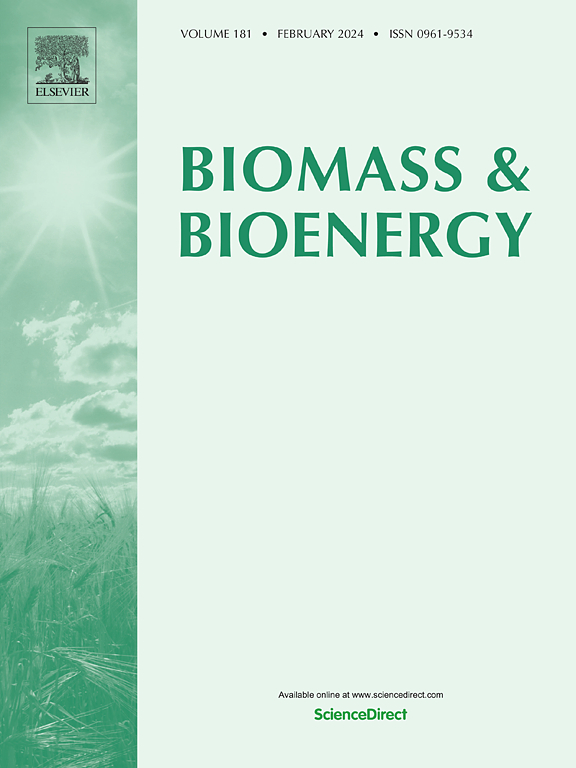Catalytic hydrothermal liquefaction of wheat straw and chemical profiling of bio-crude oil
IF 5.8
2区 生物学
Q1 AGRICULTURAL ENGINEERING
引用次数: 0
Abstract
In this study, a central composite design model was generated under response surface methodologies for the hydrothermal liquefaction of the wheat straw by considering the different process variables such as temperature (270–330 °C), reaction time (20–60 min) and feed concentration (5–15 wt%) to optimize the bio-crude oil yield and generate an experimental model. Moreover, at the optimized conditions, different catalysts such as K2CO3, Fe, ZrO2, Fe-K2CO3 and ZrO2-K2CO3 were employed for the hydrothermal liquefaction of wheat straw to maximize the bio-crude oil yield and decrease the oxygen content. Among all catalysts, Fe-K2CO3 delivered the highest bio-crude oil yield of 29 wt% with the lowest oxygen content of 14 wt%. The chromatographic analysis established molecular profiling of bio-crude oil samples, which revealed the presence of different phenolic compounds like phenol, 2-methoxy phenol and catechol including other components such as aldehydes, cyclic ketones, octene, hexadecane and octadecane. Spectroscopic and compositional profiling of bio-crude oil revealed different organic functional groups and aromatic compounds essential for the generation of molecular-level reaction mechanisms and subsequent upgrading of bio-crude oil for transportation fuel and various chemicals.
求助全文
约1分钟内获得全文
求助全文
来源期刊

Biomass & Bioenergy
工程技术-能源与燃料
CiteScore
11.50
自引率
3.30%
发文量
258
审稿时长
60 days
期刊介绍:
Biomass & Bioenergy is an international journal publishing original research papers and short communications, review articles and case studies on biological resources, chemical and biological processes, and biomass products for new renewable sources of energy and materials.
The scope of the journal extends to the environmental, management and economic aspects of biomass and bioenergy.
Key areas covered by the journal:
• Biomass: sources, energy crop production processes, genetic improvements, composition. Please note that research on these biomass subjects must be linked directly to bioenergy generation.
• Biological Residues: residues/rests from agricultural production, forestry and plantations (palm, sugar etc), processing industries, and municipal sources (MSW). Papers on the use of biomass residues through innovative processes/technological novelty and/or consideration of feedstock/system sustainability (or unsustainability) are welcomed. However waste treatment processes and pollution control or mitigation which are only tangentially related to bioenergy are not in the scope of the journal, as they are more suited to publications in the environmental arena. Papers that describe conventional waste streams (ie well described in existing literature) that do not empirically address ''new'' added value from the process are not suitable for submission to the journal.
• Bioenergy Processes: fermentations, thermochemical conversions, liquid and gaseous fuels, and petrochemical substitutes
• Bioenergy Utilization: direct combustion, gasification, electricity production, chemical processes, and by-product remediation
• Biomass and the Environment: carbon cycle, the net energy efficiency of bioenergy systems, assessment of sustainability, and biodiversity issues.
 求助内容:
求助内容: 应助结果提醒方式:
应助结果提醒方式:


